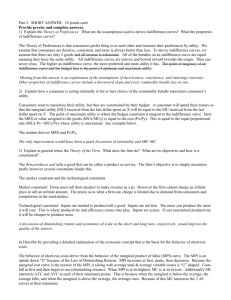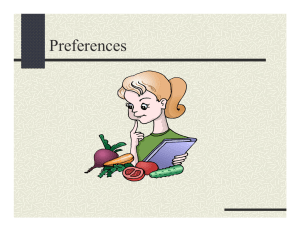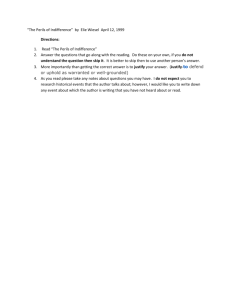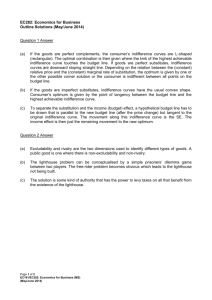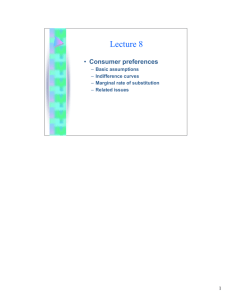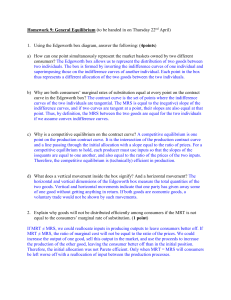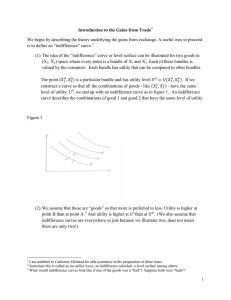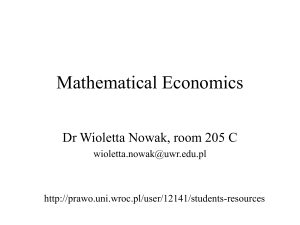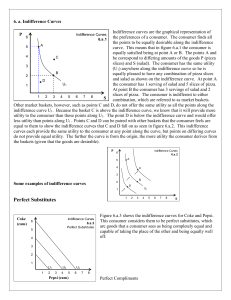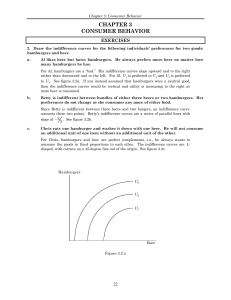Chapter 4: The Consumer & Demand
advertisement
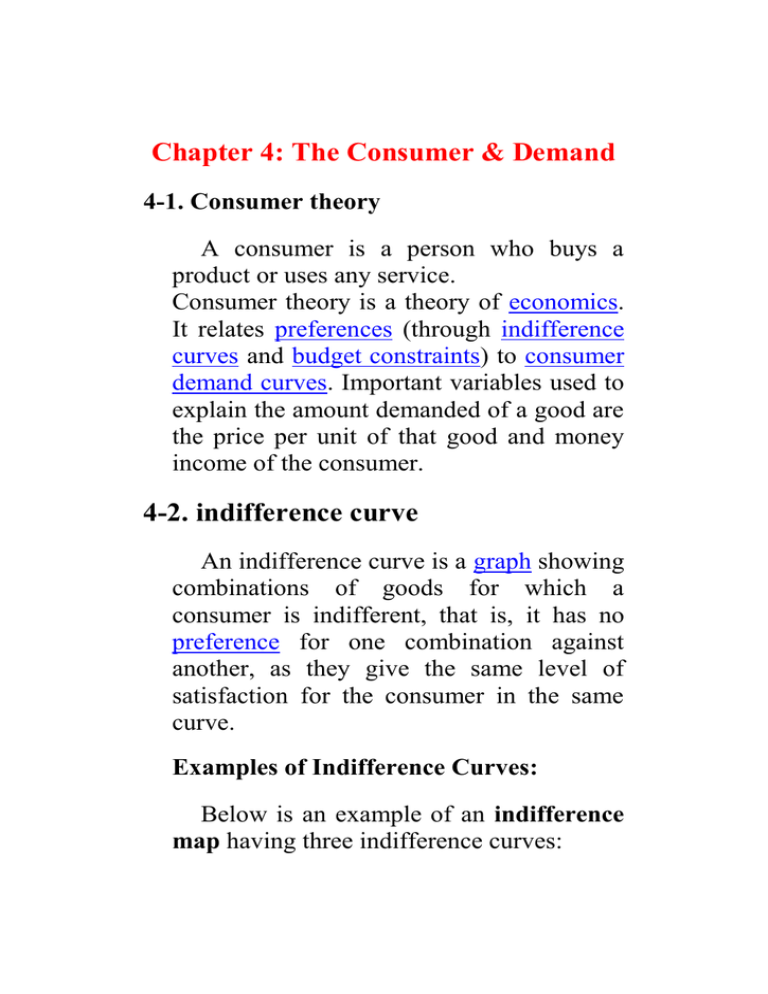
Chapter 4: The Consumer & Demand 4-1. Consumer theory A consumer is a person who buys a product or uses any service. Consumer theory is a theory of economics. It relates preferences (through indifference curves and budget constraints) to consumer demand curves. Important variables used to explain the amount demanded of a good are the price per unit of that good and money income of the consumer. 4-2. indifference curve An indifference curve is a graph showing combinations of goods for which a consumer is indifferent, that is, it has no preference for one combination against another, as they give the same level of satisfaction for the consumer in the same curve. Examples of Indifference Curves: Below is an example of an indifference map having three indifference curves: bread 15 10 5 3 6 10 meat 4-3. Indifference Table: group 1 2 3 Meat(kg) 3 6 10 Bread(Piece) 15 10 5 4-4. Marginal ratio of substitution (MRS): It’s the a mount of (Y) good that the consumer can abandon it to one good from (X). bread 15 10 3 6 meat MRS= 6-3/15-10 =3/5 = 0.6 That is mean the consumer above can substitute 15 pieces of bread by 3 kg of meat, or substitute 10 pieces of bread by 6 kg of meat 4-5. Price effects These curves can be used to predict the effect of changes to the budget constraint. The graphic below shows the effect of a price shift for good Y. If the price of Y increases, the budget constraint will shift from BC2 to BC1. Notice: because the price of X does not change, the consumer can still buy the same amount of X if he or she chooses to buy only good X. On the other hand, if the consumer chooses to buy only good Y, he or she will be able to buy less of good Y because its price has increased. 4-6. Income effect Another important item that can change is the income of the consumer. As long as the prices remain constant, changing the income will create a parallel shift of the budget constraint. Increasing the income will shift the budget constraint right since more of both can be bought, and decreasing income will shift it left.


